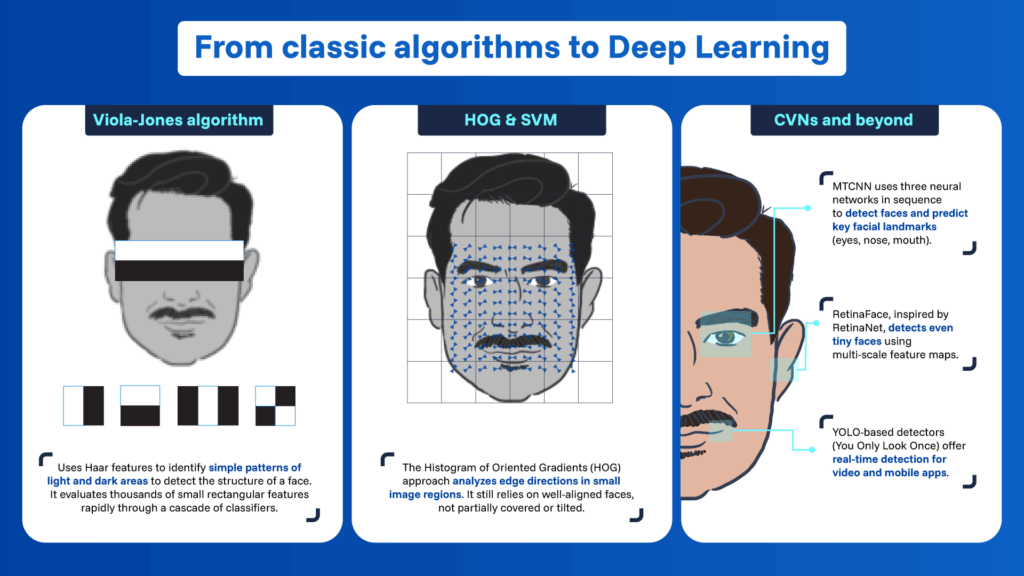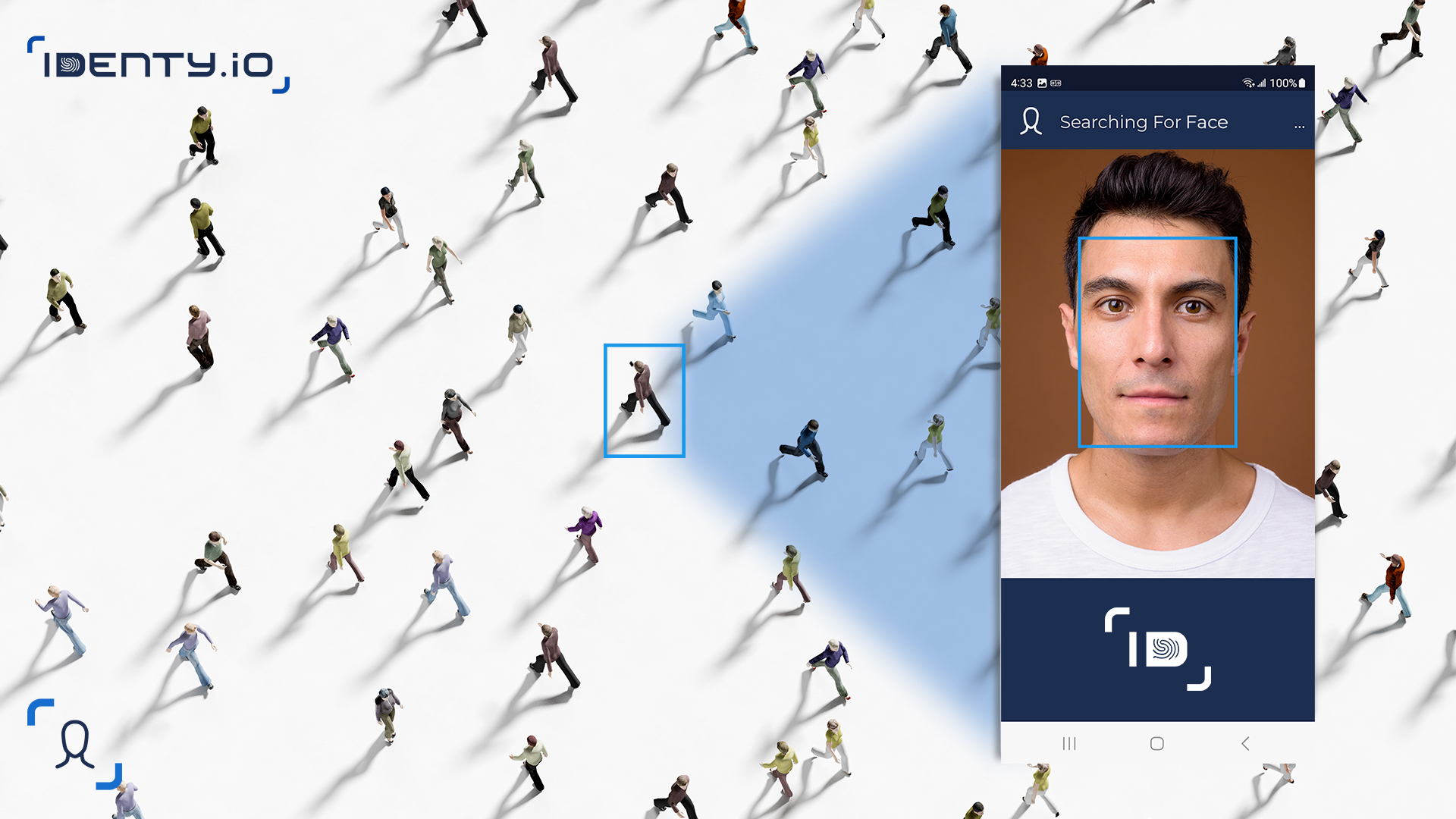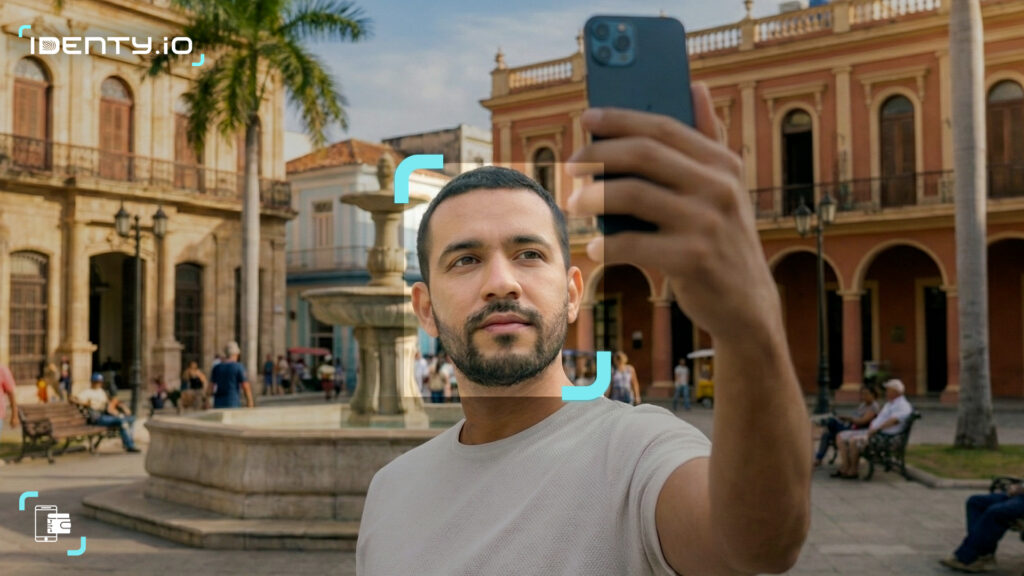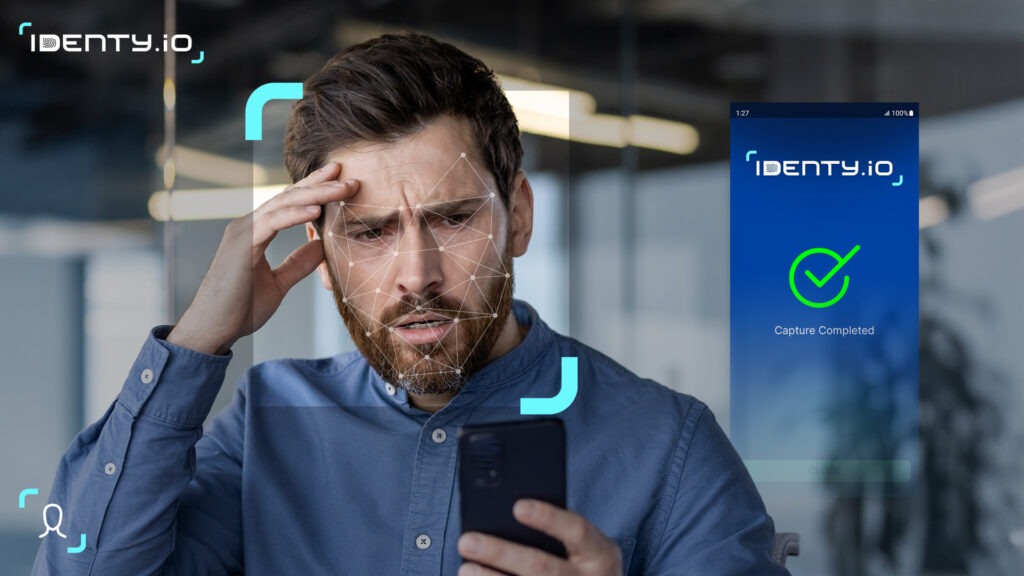Table of Contents
ToggleFace detection is the foundation of modern biometric systems. It allows software like Identy.io to automatically identify and locate human faces in images or video streams. While face recognition determines who a person is, face detection answers whether a face is present and where.
Today, this technology powers everything from smartphone authentication to digital onboarding processes and AI-driven marketing. Understanding its principles helps explain why it has become essential to security and user experience.
From classic algorithms to Deep Learning
1. The early days: Haar cascades
The first widespread method was the Viola-Jones algorithm, which uses Haar features simple patterns of light and dark areas to detect the structure of a face. It evaluates thousands of small rectangular features rapidly through a cascade of classifiers.
Although fast and efficient, Haar cascades work best on upright, frontal faces and can struggle with lighting changes or profile angles. Still, they laid the groundwork for real-time detection used in early digital cameras and webcams.
2. HOG + SVM: More precision
The Histogram of Oriented Gradients (HOG) approach analyzes edge directions in small image regions. When combined with a Support Vector Machine (SVM), it offers better precision than Haar methods. However, HOG-based detectors still depend on well-aligned faces and perform poorly when faces are tilted or partially covered.
3. CNNs and modern models
The real breakthrough came with Convolutional Neural Networks (CNNs). Models like MTCNN (Multi-Task Cascaded CNN) and RetinaFace learn complex features directly from millions of face samples, making them far more accurate and resistant to variations in pose, lighting, and occlusion.
- MTCNN uses three neural networks in sequence to detect faces and predict key facial landmarks (eyes, nose, mouth).
- RetinaFace, inspired by RetinaNet, detects even tiny faces using multi-scale feature maps.
- YOLO-based detectors (You Only Look Once) offer real-time detection for video and mobile apps.
Modern CNN detectors outperform older methods in both precision and adaptability, with near-human accuracy in unconstrained environments.
How a face detection pipeline works
- Image capture: The camera acquires a frame, often converting it to grayscale or normalized color values.
- Feature extraction: Algorithms scan the image for patterns resembling eyes, nose, and mouth. CNNs perform this automatically through learned filters.
- Bounding boxes: The system identifies potential faces and draws rectangles around them.
- Refinement: Overlapping boxes are merged through non-maximum suppression, and the face region is aligned for further analysis.
This process happens in milliseconds in modern systems, enabling real-time detection on devices with limited computing power.
Challenges in face detection
Even with deep learning, several factors can reduce accuracy:
- Lighting and shadows: Harsh illumination can hide key features.
- Occlusion: Masks, glasses, or hats may obscure part of the face.
- Pose variation: Extreme angles remain difficult, though modern datasets help mitigate this.
- Scale and distance: Very small faces in large scenes can be hard to detect.
Training models on diverse datasets and using feature pyramids (multi-scale image analysis) help reduce these issues.

Key applications across industries
1. Identity verification and onboarding
Companies like Identy.io integrate face detection into Know Your Customer (KYC) and anti-fraud systems. Biometric SDK capture and verify a live face image against an ID document in seconds. By combining passive liveness detection (detecting subtle signs of a real person) with robust CNN models, Identy.io ensures reliable, secure verification on any smartphone.
2. Access control and authentication
Face detection enables touchless access unlocking phones, logging into apps, or opening doors with a glance. The system identifies the user’s face, ensuring fast, hygienic, and user-friendly authentication.
3. Surveillance and public Safety
Security systems use face detection to locate individuals in video feeds before recognition algorithms analyze identity. It helps track movement, count people, or blur faces for privacy in recorded footage.
4. Marketing and personalization
In retail and digital signage, face detection can adapt content to viewers. For example, smart displays may detect a customer’s presence and adjust advertising based on age or gender analysis (always subject to privacy regulations).
5. Photo Tagging and Emotion Analysis
Social media platforms and photo apps detect faces to suggest tags or group albums. In research and UX testing, emotion analysis uses detected faces to evaluate engagement or sentiment.
How Identy.io integrates face detection
We offer a mobile biometric SDK and cloud APIs optimized for real-time processing. Detection and liveness checks are executed on-device protecting user privacy and ensuring smooth performance even on entry-level smartphones.
The platform complies with ISO 30107-3 (anti-spoofing standard) and has been independently validated by NIST. Its architecture combines speed, accuracy, and security, making it suitable for banking, fintech, and enterprise onboarding.
Face detection has evolved from simple pattern recognition to sophisticated AI capable of identifying faces in any condition. Software providers like Identy.io transform these technical advances into secure, real-world applications helping businesses verify identity, enhance customer experience, and prevent fraud.
As AI models continue to improve, face detection will remain the invisible yet vital layer behind most biometric and interactive systems.
Bibliography
- Viola, P., & Jones, M. (2001). Rapid Object Detection using a Boosted Cascade of Simple Features. IEEE CVPR.
- Dalal, N., & Triggs, B. (2005). Histograms of Oriented Gradients for Human Detection. IEEE CVPR.
- Zhang, K. et al. (2016). Joint Face Detection and Alignment using Multi-task Cascaded Convolutional Networks (MTCNN). IEEE SPL.
- Deng, J. et al. (2019). RetinaFace: Single-stage Dense Face Localisation in the Wild. arXiv:1905.00641.
- Redmon, J. et al. (2016). You Only Look Once: Unified, Real-Time Object Detection (YOLO). IEEE CVPR.
- Identy.io – Official website and SDK documentation (2025).
- Microsoft Azure Face API Documentation (2024).
- Biometrics Update Magazine – Articles on liveness detection and anti-spoofing.





